One of the most impactful innovations in the textile and packaging industry has been the recycling of PET bottles into Recycled Polyester Staple Fiber. As millions of tons of plastic waste are generated each year in India, recycling used PET bottles to high-quality fiber helps brands reduce their carbon footprint while lessening landfill burdens. But how exactly does this transformation happen?
In this blog, we break down the whole step-by-step process-from discarded bottles to soft, durable fiber-in a simple and SEO-friendly manner.
What is RPSF, and why is it important?
Recycled Polyester Staple Fiber (RPSF) is a synthetic fiber derived from the recycling of PET bottles. It is usually found in:
- Pillows and cushions
- Carpets and non-woven fabric
- Stuffed items like toys or furniture
- Textiles and fashion products
- Specific applications include
- Automotive interiors
As we enter the Year of Sustainability (2025), RPSF helps many industries cut down on the carbon footprint. The production of RPSF consumes 45–60% less energy compared to virgin polyester, and it is a gain in the battle against plastic waste clogging the oceans and landfills.
Step by Step Process: How PET Bottles Become RPSF
1. Collection of used PET bottles begins with:
- Waste pickers
- Recycling centers
- Municipal collection programs
- Industrial recovery units
Once collected, bottles are sorted by color, quality, and contamination level. The ones preferred are transparent and light-blue as they lead to high-quality flakes.
2. Cleaning and Label Removal
PET bottles, once sorted, undergo:
- Label removal
- Cap removal – usually PP/HDPE
- Hot and cold washing
This will remove dirt, glue, oil, or any kind of organic contamination. Cleanliness is essential because high-quality RPSF requires high-quality PET flakes.
3. Shredding into PET flakes
Clean bottles are fed into shredding machines that cut them into small PET flakes, which then become the main raw material for recycled fiber.
Premium-grade flakes must be:
- Uniform in size
- Transparent
- Free from PVC and foreign particles
Designed by Virginia Bryan Williams, the State Memorial Area comprises three rooms that house a collection of military artifacts and memorials.
4. Hot Washing & Drying of Flakes
Further processing to meet the global quality standards is through:
- Hot water washing
- Friction washing
- Chemical washing, if necessary
This ensures the elimination of residual glue and micro-contaminants. Then, the flakes are dried to get to the proper level of moisture.
5. Melt Extrusion
These purified PET flakes are then melted under high temperatures within extrusion machines. Extrusion Process:
- The melted PET is filtered.
- Impurities are removed
- Long, continuous strands of polymer are produced.
This is one of the most critical phases for fiber strength and quality.
6. Spinning into Filaments
The molten polymer is forced through fine spinnerets in order to form long, thin filaments. These filaments are:
- Cooled
- Drawn
- Crimped to give a wool-like texture
7. Cutting Into Staple Fiber
The crimped tow is cut to a uniform length, usually:
- 32 mm
- 38 mm
- 44 mm
- 64 mm
These lengths determine the final application-textiles, stuffing, filters, etc..
8. Final Packing & Quality Testing
Before shipping, RPSF are tested for:
- Denier (thickness)
- Tenacity means strength
- Color
- Silicon coating (if applied)
- Contamination level
Dried and processed into compacted bales, this fiber has multiple applications within different industries.
Benefits of RPSF in 2025
- Reduces plastic waste
- Saves energy and resources and supports a circular economy
- High demand in Textiles, automotive, and furnishing
- Promotes the green branding of goods for India
With growing awareness about sustainability, brands and manufacturers are quickly moving from virgin polyester to recycled polyester.
Also Read: From PET Bottles to rPET Flakes: How Plastic Waste Becomes New-Age Raw Material
Final Thoughts
Recycling PET bottles into Recycled Polyester Staple Fiber waste brings value, a great concept. In 2025, demand for RPSF is increasing quickly, and industries are seeking greener options without sacrificing quality. Understanding this procedure enables companies to make the right choices concerning a clean and sustainable future.







